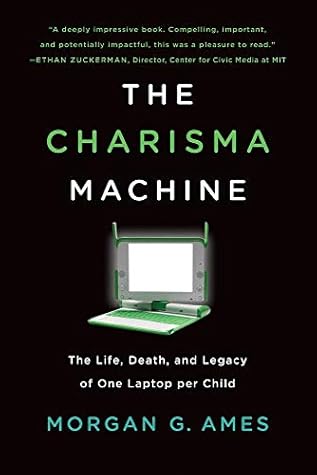More on this book
Community
Kindle Notes & Highlights
Read between
November 18 - December 29, 2019
“Now when you go to these rural schools, the teacher can be very well meaning, but the teacher might only have a sixth-grade education. In some countries, which I’ll leave unnamed, as many of as one-third of the teachers never show up at school. And some percent show up drunk.”
More importantly, these two imaginaries share an exclusionary masculinity that is often hostile to outsiders, including girls and women, people of color, and others who do not fit the gendered norms implicit in the imaginaries,
This is an important point: the author is reminding us it is from this culture that OLPC came out to change the lives of poor Africans ... minorities etc.
“We are certainly supportive of efforts to build more schools, get more teachers into those schools, but we think that that’s sort of a treading-water process, and we’re trying to do something that can do a little bit of end run around the status quo and move a little bit quicker to reaching more children, and we think that the connected laptop is a part of that solution.”
be an inexpensive way for people of limited means to use a computer for such things as internet and educational software.
This was, in fact, a huge problem! The larger problem here is that the device makers believed these computers, even though they would not be OK to sell or distribute in the west, would be acceptable for the poor.
Encoding freedom, the XO laptop’s software was all free and open source, and the XO keyboard had a View Source button to emphasize this. The team also tried to make the laptop hardware open source and easy to repair—efforts that reflected their conviction that children can and should teach themselves to program, just as they remembered teaching themselves. Beneath these themes was an unspoken faith in the XO laptop’s ability not only to succeed in its constructionist goals but to be a shortcut to solving social problems where other approaches had failed—a faith in technology as a source of
...more
The laptops were designed and disseminated in an imaginary world, where the users resided in the childhood dreams of the project designers.
The reality on the ground was that many of the places where these computers were being planned for distribution relied on teacher-centric teaching method.
Parents of these children would have protested any attempt to let the children lead in any meaningful way.
Despite what OLPC folks believed, learning wasn’t an objective construct. The world they sought to operate in did not share OLPC’s vision for how learning occurred.
So, in the name of computer security (and with the assumption that connectivity, at least to the school server, would not be an issue), Krstić created a BIOS-level security lock that could not be deactivated and also managed programs’ access to hardware peripherals, such as the camera and microphone—all without the need for a password on the machine.
Moreover, not all rooms had power outlets; in fact, parents, teachers, and Paraguay Educa had to retrofit school classrooms with outlets at the beginning of the project, and many of the houses I visited had only a few outlets total, most of them in use by lamps, radios, televisions, and appliances.
They then used Tux Paint’s built-in image “stamps” to generate examples in the three categories. The cartoonish sounds of Tux Paint’s stamps emanated out of the XO laptops’ tinny speakers, ricocheting off the painted cinderblock walls of the room. Students without laptops wrote out examples and drew pictures in their notebooks instead. After about ten minutes of working, the teacher announced that the rest would be homework for tomorrow and asked children to put their laptops away and take out their notebooks to copy a poem in Guaraní from the board in the half hour or so before school ended.
This is the perfect example to show how terrible tech can be in the hands and context of a community that doesn’t have the resources to sustain its use. What do I mean? It’s clear in this situation, the best use of the teacher’s time is to use a different kind of technology, namely, paper and a printer. Instead of having students copy a poem from the black board for 30 minutes, students and their teacher could have benefited from a printed material.
It was open source, but it did not encourage deep, embodied, passionate exploration any more than any other drawing program. In fact, drawing on the XO laptop was inferior to drawing on paper in several ways, even after the software was loaded and working. It was beset by the difficulty of using the unreliable trackpad rather than a pencil, the temptation to categorize only the available images instead of thinking of other items and drawing them freehand, and, of course, the ever-present temptation of the internet.
This is an example of Technology boxing in teachers. It’s limiting student’s ability to think freely and and be creative.
“For these kids, nothing will surprise them. Teachers can be intimidated even by cash registers, but the kids are prepared for the future, and with luck they’ll study more and more and make our city evolve into something great.”
This is what we all think.we want to believe that technology will miraculously change our reality and if we use it right, erase the injustices and inequalities. This is the charisma piece. The charisma of technology blinds us to the truth of our historical, economic and societal realities.


